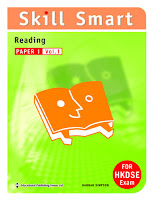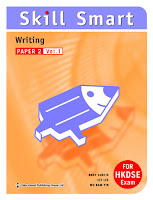Years ago, when I was working in-house as a secondary ELT
editor in Hong Kong, a woman from the primary ELT team came over to my desk to
ask about grammar for a primary course. It had to do with teaching what and how
many with the present simple first or yes/no questions in the present simple
first. My first reaction was yes/no questions, but I quickly took that back, explaining
that information questions are more common and should probably come first in a
general English course.
I think most ELT content developers would agree with that,
but if you feel differently, your thoughts are most welcome. The strange thing
was what I learned next. In a reading passage, a writer had used a couple of
yes/no questions before they had been taught. As that ‘wasn’t allowed’, she was
wondering if she could move the teaching of yes/no questions closer to the
beginning of the course.
‘Wasn’t allowed.’ That was odd to me so I asked what she
meant and the answer was what I call the primary ELT contradiction rule: We can’t
use a structure or grammar item in the course until the students have been
taught that structure or grammar item. The same can apply with vocabulary.
Before my brain could stop me, I blurted out, ‘How is it possible to do the
first unit in Primary 1, then?’
And that was the beginning of my education with the planning
of primary ELT materials. She explained that, for example, we can’t use the
present continuous or past simple or contractions or prepositions in a reading
passage or activity if that grammar hasn’t been taught yet. I couldn’t
understand how it was possible to control language to such a degree. Would that
make the materials terribly unnatural? I asked. And the discussion went on ...
Now I’ve planned enough courses to know that we need to
consider the progression of grammar and vocabulary items as we design. This is
also true of topics and outcomes. And I can understand that we have to start
primary courses somewhere, which is almost always with classroom objects
(countable nouns, articles, how many, numbers, are/can, often colors) and
identifying oneself (what, is, possessive adjectives).
But to think that primary students would not see a single
past simple verb in context until they were taught the past simple (which is
often not until Primary 3) jarred with my teaching sense. I’m guessing that not
all primary courses are so rigid and ELT-y, but the primary courses I’ve seen,
worked on, and written have been. I guess the thinking is that we don’t want to
overwhelm young learners, and I can understand that, but on the other hand, it
seems clear that this way of thinking greatly limits the English language learning
experience.
Take the past simple, for example. Because past simple verbs
have to be conjugated and many are irregular, we often do not teach the past
simple unit Primary 3. In such a case, it means students will have had 20 to 24
units of material before they see an English simple past verb form. It strikes
me as odd and I often joke with teachers and editors that there is no past
time, no concept of the past for students till they’re in Primary 3. It might
make for a good science fiction story.
Of course, we know that young learners do have a concept of
the past because we can look at their first language. Anyone reading this can
think about their native language and the simple past questions we might ask
children that are two or three years old. What did you have for lunch to day?
Did you sleep well? What did you learn at school? How was your day? What did
you get for your birthday? So why don’t we introduce the past tense earlier in
ELT courses?
Well, because data show waiting to teach past simple ‘works’.
(And I won’t get into the discussion about what ‘works’ today.) We parse the
English language down into bits and pieces, into bitty building blocks that we
need to be stack together so they won’t fall, and ... voila ... we have a scale
of progression. While I understand learning a new language often works that
way, part of me feels that we’ve come to accept that mindset almost as dogma.
Our thinking about grammar progression is largely based on structural
complexities, not conceptual frameworks or daily-life contexts.
And to this building-blocks method, we often add in text
types and their features, vocabulary, listening and reading skills, etc. (Is
all that not overwhelming?) In one course I helped write, I couldn’t use the
word basketball in a passage because it hadn’t been taught. But here are some
words I could use (and had to explain) in P1: identify key words, pronoun
reference, recognize common abbreviations.
These were the reading skills and actual headings on the
student book page. I queried it because it broke the primary ELT contradiction
rule, and suggested putting these in the teacher’s book, especially for Key
stage 1, so teachers could decide how to introduce it. My suggestion didn’t
happen. All these additions and ticking off boxes of objectives and aims make
me wonder whether we are sometimes impeding rather than facilitating language
learning.
Yeah, yeah, I can hear you. Courses have to start somewhere.
We know that some structures are simpler than others (see the CEFr and all
that) and so we start with the simple ones and move on from there. Even with
adult learners we have to do this, even ELT readers have graded language,
structures, and so on. I’ve had the discussion many times ... it’s how it’s
done, it’s how the local market does it (and all markets seem to be similar),
the local English teachers (LETs) are used to it, the Education Bureau knows
what it’s doing ... and finally, how would change it?
Well, I’m not loaded with degrees and I’ve never studied
data sets, but my feeling is something like a blend of language arts and ELT
could be worth looking into, if you already haven’t. Young learners, Pre-Key
stage and KS1 learners, love stories, visual content, movement, acting out,
playing, singing. These early stages could focus largely on reading, spoken
communication, fluency, getting along. Reading and listening skills could
easily be taught without overtly identifying and explaining them on a student
book page. The same can work for text types and so on. The materials could then
link in grammar and further concepts in KS2.
One reason I feel the language arts + ELT approach can work
better is that the focus is on communication and fluency. And once students
have learned to communicate, it’s much easier to talk about grammatical
structures, listening skills, text types, and other things. As is, P1 students,
students who may not speak a word of English, are being taught so many things
at once that English must seem a garbled mess to them. Imagine trying to
explain grammatical concepts and structures or reading skills to students who
can’t understand what you’re saying. And yet, in my experience, this is what we
do and somehow we make it ‘work’.
I’ll close with this additional comment, which may seem
off-piste. As a an editor, I was taught from the get-go, always keep your
audience in mind. A good rule, I thought, so I now ask: Are we keeping the
audience in mind when we heap structures, skills, text types, tasks, etc. on
KS1 learners?
Would love to hear your thoughts on all this.
:-)






















